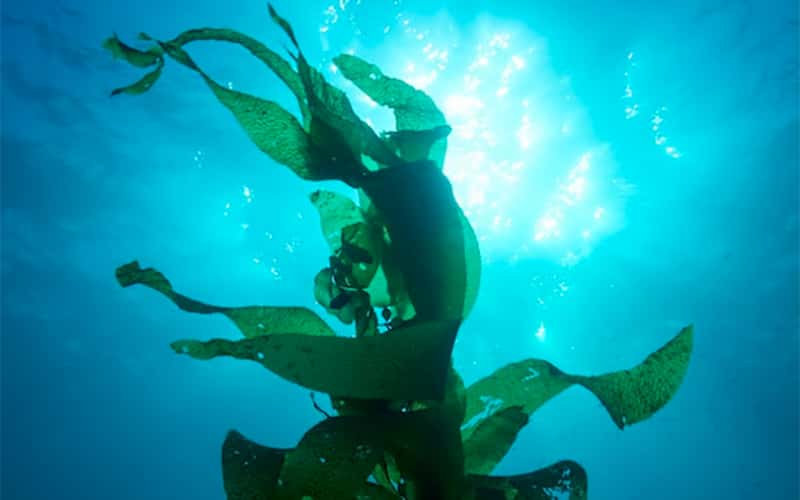Biology Professor Sean Grace was quoted in an article, “What kelp can teach us about thriving amid uncertainty,” published on Quartz. The writer, Katherine Ellen Foley, uses kelp’s ability to survive in harsh conditions as a metaphor for how we can look at life during a pandemic. Below is the full text of the article.
“What kelp can teach us about thriving amid uncertainty”
By Katherine Ellen Foley
Health and science reporter, Quartz
November 4, 2020
On days when it feels that the uncertainty is too much to bear, we’d be wise to take notes from a humble, giant algae: kelp.
We land-dwellers rarely think about kelp, but we’ve got quite a lot in common with this ocean friend. For one thing, neither of us are plants; kelp is actually a type of algae called a heterokont. Our lives also share similar beginnings and ends: We both create offspring via sexual reproduction, and eventually, our cells age and die.
These similarities should inspire us to know that we, too, can be like kelp in perhaps its most remarkable feat: It stays firmly rooted amid tumultuous forces beyond its control, and in doing so, inadvertently creates a nurturing environment for others.
Kelp is somewhat constrained in where it can live; because it is algae, it must stick to shallow salt water where it can absorb the sun’s rays. Unfortunately, though, these shallows experience incredibly turbulent waters—too rough for most organisms to handle. These forces would rip humans apart, says Sean Grace, a marine ecologist at Southern Connecticut State University.
Although kelp might be happier in a calmer environment, it continues to thrive. It does so by being both steadfast and flexible. At the bottom of kelp stocks are appendages called holdfasts, which live up to their names, Grace says. Holdfasts fuse themselves to rocks, and become unflappably grounded.
Holdfasts allow the parts of kelp that stretch up to the sky, called stripes and blades, to bend to the water’s will. This flexibility is what allows them to survive, instead of getting whisked away and torn to shreds. Even while it accommodates unforeseen pushes and pulls, kelp never stops reaching for the suns’ rays.
But here’s more: As kelp sustains itself by absorbing sunlight, water, and literal tons of carbon dioxide (cleaning up much of our dirty work, I might add), its stability creates a habitat for all kinds of marine life. It does so physically, by providing a reliable hideout for fish, crustaceans, and mammals; and biologically, by providing these creatures with the nutrition they need to thrive.
“If you look all around the world to wherever there are kelp forests, you find higher biodiversity, which is a signal of health,” Grace says. The more kelp, the more other kinds of life thrive.
We didn’t ask to live through the pushes and pulls of 2020, nor did kelp ask to live through the ebbs and flows of the tides. Yet kelp survives, and help others thrive, as should we. Although we don’t have holdfasts, we do have family and loved ones to keep us grounded. We have foundational values that allow us to keep sight of our goals, even while being pulled in undesirable directions. And we can make room for others along the way, too.
Perhaps when Confucius referenced the strength of the humble green reed compared to the stiff oak, he really meant to say “kelp.”



